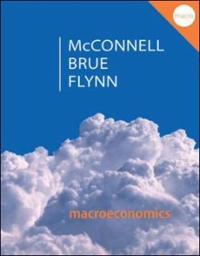Kindly provide sufficient ex.planations to the following questions.
?
Question 4:(Signaling: 10 Marks) In this problenr a labor market exists where employers hire and pay workers according to how much formal education workers possess. Education is a proxy for the level of productivity that employers can expect from workers. Therefore, employers follow a strategy in which they hire workers and pay salaries according to the following conditions: Degrees Above the Values of Post High School High School Level Education During Working Life, B0) None 0 (y = 0 years) Associate's Degree $30,000 (y = 2 years) Bachelor's Degree 351,000 (r = 4 years\") Master's Degree $58,000 (y = 6 years) Assume that there are only two types of worker abilities, those who are less productive (type L) and those who are highly productive (type H). The less productive workers have to study harder than highly productive workers in order to earn any degree. Consequently, the costs (including the psychic costs of study effort) of attaining various levels of education for these two types of employees are different. For less productive workers: C L (y) = $13,000y For highly productive workers: C H (y) = $10,000y a) Explain why is there a need to signal and comment why education may be a good signal in this case. (2 Marks) b) Draw a diagram with years of education on the horizontal axis. Graph the benets to education B(y) and the costs of education for each of the two types of workers. Discuss what level of education each type of worker should obtain. (2 Marks) c) Now use the equations above to verify your answer om part (b) mathematically. (Hint: for both me high and low productivity workers, check separately if each level of education should be obtained or not, compare the years in each case with the years required to get that level of education). 1. An individual's preferences are given by U(x, y) = xy, where a and S are positive parameters. (a) Show that MRS (b) Define "convex preferences" (That is, in one sentence, explain convex indifference curves). Are the preferences of this individual convex? (c) For commodity bundles for which y = x, develop an intuitive explanation of why, if a > B, MRSxx > 1 . 2. A consumer is willing to trade 4 units of x for 1 unit of y when she is consuming bundle (8, 1). She is also wiling to trade 1 unit of x for 2 units of y when she is consuming bundle (4, 4). She is indifferent between these two bundles. Assuming U(x, y) = xay, where a and B are positive parameters. (a) What is the utility function for this consumer (the specific form with a and B identified)? (b) Are the values for a and B unique? Why is it so? (c) Was there a redundancy of information in this problem? If yes, how much is the minimum amount of information required to derive the utility function? 3. (The quasi-linear function) Consider the function U(x, y) = x+ Iny . This utility function is usually used to describe the consumption of one commodity with respect to all other commodities. So, In y could represent (the utility from) the commodity of interest, while x could represent (expenditure/utility regarding) all the other goods consumed. (a) find the MRSxx of the utility function and interpret the result (b) Compare the marginal utility of x and y. How do you interpret these functions? (c) Find the demand for x and y, given p., p, and /.(Worth 25 points total) Here in Question 3, you should answer by writing one and only of the three responses "Always true\Description of the economy: Consumer A owns LA = 8 units of labor, no capital, all the shares of Consider a 2x2x2x2 Production-exchange economy with two factors L firm X, and no share of firm Y. and K, two goods X and Y, two firms (one that produces good X and Consumer B owns Ly = 8 units of capital, no labor, no share of firm one that produces good Y), and two consumers A and B. X, and all the shares of firm Y. consumers A and B. Consumer A's preferences are described by the utility function uA : R? -+ R, with (1) Find the set of Pareto optimal allocations in this economy and illustrate it in a diagram using the production possibility frontier UA(IA, yA) = JAYA and the Edgeworth box when (i) A = ], or (ii) > = ]. where IA is the quantity of good X consumed by A, ya is the quantity (2) Find the competitive equilibrium in this economy when a e ($2, $21 of good Y consumed by A, and a E [0, 1] is a preference parameter. and A = 3. Consumer B's preferences are described by the utility function us : (3) Suppose that a planner is trying to maximize the welfare of the R -+ R, with consumers. Would the planner prefer the technologies where * = } UB( TB, yB) = ByB or where A = ? Discuss your answer. where Is is the quantity of good X consumed by B, ys is the quantity of good Y consumed by B, and a is a preference parameter that has the same value as for consumer A. The technology of the firm that produces good X is described by th production function fx : R? -+ R, with fx (lx, kx) = JAlx + (1 - A)kx if lx 2 2 if lx










